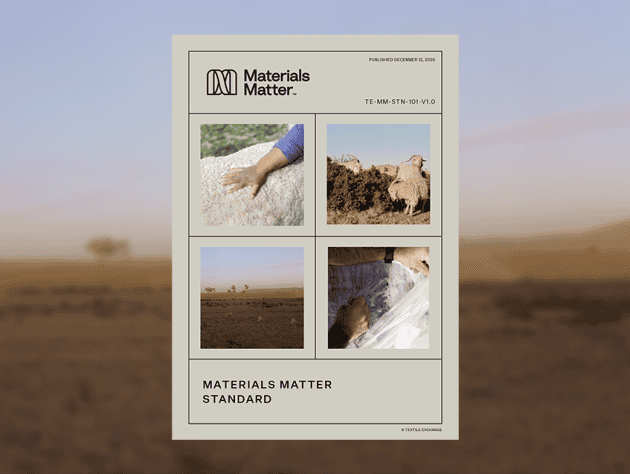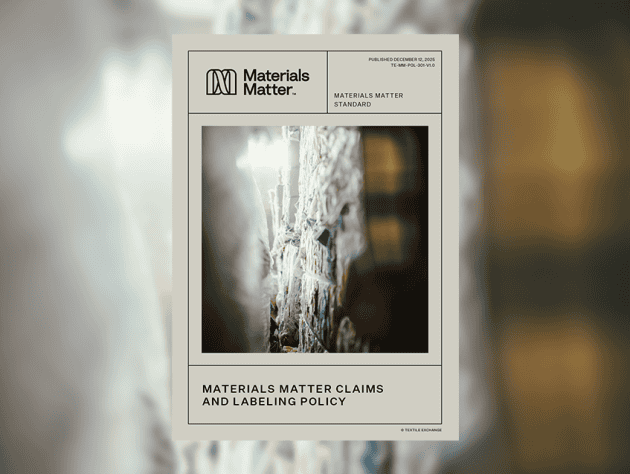Introducing the Materials Matter Standard, a shared direction for climate, nature, people, and animals
The Materials Matter Standard is a voluntary sustainability standard for the production and primary processing of raw materials used in the fashion, textile, and apparel industry. It sets out to incentivize a world in which the materials in our clothing and textiles are produced in a way that respects climate, nature, people, and animals.
The standard establishes detailed requirements for the production and primary processing of raw materials—from how land, water, and energy are used, to how working conditions, animal welfare, emissions, chemicals, and waste are managed. Its purpose is to provide a common language and shared direction for the industry, while recognizing the unique contexts of different material producers, processors, and the communities and landscapes they depend on.
Criteria
Explore the criteria
The Materials Matter Standard criteria have been developed over five years in close collaboration with a designated International Working Group made up of brands, retailers, suppliers, producers, NGOs, and technical specialists. Two publicly consulted drafts and a pilot version, tested in key material production regions from Peru to Italy, have helped refine the framework, alongside extensive work to ensure alignment with the ISEAL Code of Good Practice for Sustainability Systems.
The criteria unify Textile Exchange’s current standards under one coherent vision: a world where materials have lasting value, leading to thriving communities and flourishing landscapes. The Materials Matter Standard becomes effective on December 31, 2026, and will be mandatory from December 31, 2027.

ABOUT
Why is Textile Exchange transitioning towards the Materials Matter Standard?
Uniting our standards for greater impact
For more than 20 years, Textile Exchange has been developing and maintaining leading material sustainability standards. We began developing the new framework in 2021 with a clear goal: to align the ambition, rigor, and expected results across its material-specific standards and transition the industry into a more coherent, science-aligned way to measure and verify impact.
Since then, we have worked closely with stakeholders from across the supply system to design and test a framework that is both robust and workable in real-world production systems. The Materials Matter Standard builds on the strengths of what came before while offering a more streamlined pathway forward.
Aligning material production around shared impact
The Materials Matter Standard represents a significant shift in how Textile Exchange standards connect to impact. It sets detailed requirements for the production and primary processing of raw materials—from how land, water, and energy are used, to how working conditions, animal welfare, emissions, chemicals, and waste are managed. Its purpose is to provide a common language and shared direction for the industry, while recognizing the unique contexts of different material producers, processors, and the communities and landscapes they depend on.
By focusing on the earliest stages of the supply chain, the standard helps clarify both the risks and opportunities related to raw material production. Combining practice-based and outcome-based criteria, it recognizes the work of participating organizations that meet its requirements and ensures fairness and consistency between them. Certification also provides brands and retailers with an accessible and transparent framework for substantiating claims about their materials.
Linking standards, data, and impact
The Materials Matter Standard places a sharper emphasis on driving impact at the raw material and primary processing stages, while Textile Exchange’s existing Content Claim Standard (CCS) will continue to support chain of custody and product claims.
The Materials Matter Standard sits at the heart of the Materials Matter system, which integrates the standard, policies, third-party assurance, claims, and traceability tools to ensure certified products reach the market with credibility.
What materials are currently in scope of Materials Matter?
The first edition of the Materials Matter Standard covers materials in Textile Exchange’s existing Responsible Animal Fiber framework (wool, alpaca, mohair), and recycled materials currently covered by the Global Recycled Standard and Recycled Claim Standard.

Timeline
Transition timeline

Read the updated Claims and Labeling Policy
A new Claims and Labeling Policy has been published alongside the Materials Matter Standard, outlining the requirements for using Materials Matter claims and labels.
The policy introduces a new certification mark, labeling system, and allowed language that organizations may use when making claims about Materials Matter.
